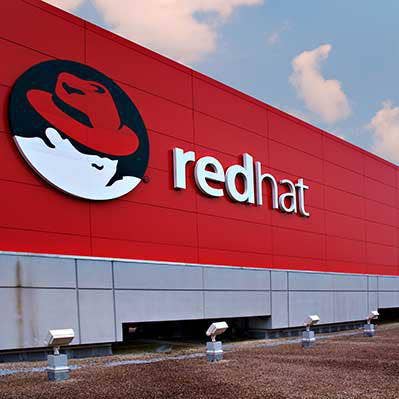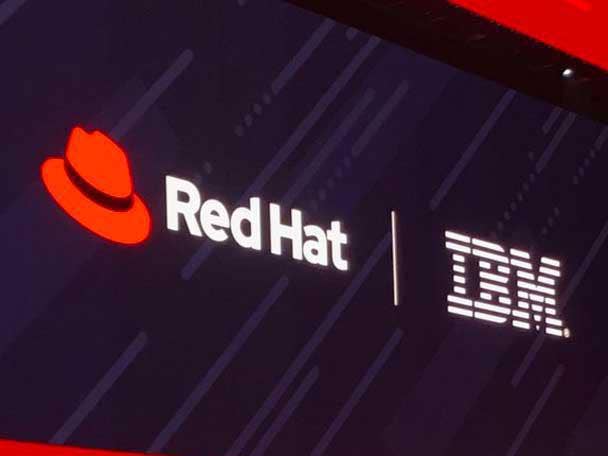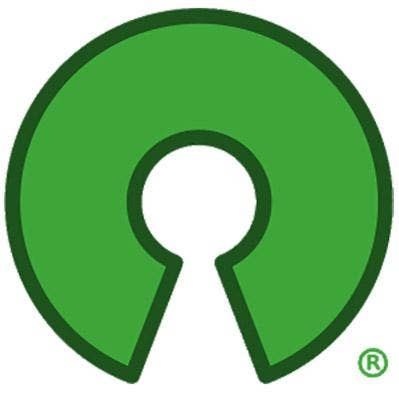Red Hat CEO Matt Hicks: Partners Key To $1 Trillion Open Hybrid Cloud Market
‘[Open hybrid cloud] is a huge area to execute to. Partners will have a massive influence on that. Because we’re just not going to be talking to every customer doing that. But all of them are going through that motion,’ new Red Hat CEO Matt Hicks tells CRN.

Partners will serve an essential role in bringing Red Hat tools to market as the IBM subsidiary works to broaden its reach in multi-cloud and edge environments, Matt Hicks, Red Hat’s recently promoted CEO, told CRN.
“Our partner community has always been a critical part of delivering to customers,” Hicks said. “We’re just seeing more and more momentum in our focus on open hybrid cloud growth. And whether that’s in the enterprise space of customers moving from on-prem to cloud and from one cloud to multi-cloud, or if it’s from the inclusion in edge where there’s more industry-specific focus—partners are a critical link, whether it’s the MSPs or they’re systems integrators … so I think that will only increase as we go forward.”
Hicks assumed the top job at Raleigh, N.C.-based Red Hat in July, succeeding Paul Cormier, who moved into the role of Red Hat chairman. Both men report to IBM Chairman and CEO Arvind Krishna.
[RELATED: IBM’S RED HAT NAMES MATT HICKS AS NEW CEO, HINTS AT FUTURE ACQUISITIONS]
How Does Red Hat Feel About Partners?
Cormier told CRN that Red Hat has been decreasing the number of customer accounts that get direct service from Red Hat and has hired more employees to work with the ecosystem.
Hicks—who has been at Red Hat for more than 16 years and before that at IBM for about four years—said he has worked with a variety of partner businesses over his career.
“I got a very hands-on, frontline experience, literally down to printing out registration numbers that we would ship for OEMs that would put them in boxes and send them to Asia,” Hicks said of his earlier Red Hat days. “So it was a great training to understand just the reach that they have.”
He sees partners as a key component in growing the number of Red Hat users and expanding use of Red Hat tools into more use cases, including edge computing.
“I think edge worldwide spend in 2025 will be a quarter of a trillion dollars,” he said. “The application growth in the next two years I think will be 800 percent. There are industries where partners will have that last-mile knowledge for us. And most of those partners probably need our platform and success to bring software innovation to the industry. So it is a phenomenal opportunity for us.”
Here’s what else Hicks had to say to CRN.

What’s your message to channel partners as Red Hat’s new CEO?
Our partner community has always been a critical part of delivering to customers. … We’re just seeing more and more momentum in our focus on open hybrid cloud growth. And whether that’s in the enterprise space of customers moving from on-prem to cloud and from one cloud to multi-cloud, or if it’s from the inclusion in edge where there’s more industry-specific focus—partners are a critical link, whether it’s the MSPs or they’re systems integrators … so I think that will only increase as we go forward.
I do think it’s a great opportunity for our partner community and ourselves. We’re really focused on making sure we enable them to help reach customers.
Does anything change with channel leadership?
[Senior Vice President of Red Hat Partner Ecosystem Success] Stefanie (Chiras), from the beginning she’s had the role and has reported to [Executive Vice President, Global Sales and Services] Larry Stack, who runs our go-to-market team. Stefanie will continue with that.
But I would say, Stefanie and that linkage is somebody I will always be tied to and driven to because partners just represent so much opportunity in terms of how we deliver.
We are a platform company. So for a lot of times, even in my internal communications, we’re saying we have to be comfortable with that—if we don’t necessarily deliver everything in the solution. And so, our ability to partner in most of the cases, that’s what we need to be able to deliver the end customer solution.
So Stefanie represents an absolutely critical link in our go-to-market strategy. And … her tie into our products team and her knowledge there makes her an ideal candidate for being able to connect those worlds.

Have you worked with partners in your different roles at Red Hat?
I started my career at Red Hat in IT. This was 16-plus years ago but really in the plumbing of, how do we work with our OEMs on that. Or our resellers. The mechanics of, what they do for end customers and deliver it? How do we enable them, support them?
So I got a very hands-on, frontline experience, literally down to printing out registration numbers that we would ship for OEMs that would put them in boxes and send them to Asia.
So it was a great training to understand just the reach that they have. In PnT [Red Hat’s products and technologies division], when you get to systems integrators on that ... we can build a great product, but often the customer’s vision is implemented with a systems integrator.
And having them understand our products, having their solutions well-integrated with us, it is absolutely critical. And I would say I think that’s actually grown—especially with the GSIs [global systems integrators] in their influence in the move to cloud.
And then most recently, when we look at the routes for us into edge, a great example would be we announced a partnership with [Switzerland-based process automation software provider] ABB. … ABB does robotic arms that are really simplified on factory floors.
We don’t really have access to sell to the factory floor on it. But ABB in concert with other partners does. And so, I’ve loved every moment of that, from understanding our OEMs and resellers, our SIs to our core partners that open up routes for us. And it’s an exciting part for me.
I think just the nature of open source allows us to build deeper partnerships in almost all of those areas. And I think partners add a tremendous amount of value to our model. So I’m looking forward to extending that. But, yes, over the years I’ve gotten quite a bit of experience getting to work with our channel.

Former Red Hat CEO Paul Cormier
What are some of your first goals as CEO?
Paul [Cormier] and I have worked closely on this—a phenomenal team, we don’t have any big changes to make on that.
I’ve worked for the last 10 years on our product strategy and execution, I’m comfortable with that.
My main focus right now is on continuing to execute to the opportunity ahead of us. And that’s making sure we have the models to break into the open hybrid cloud opportunities. Customers move from on-prem to single clouds to multi-clouds.
We think it’s a $1 trillion market. And we see basically a quarter of the applications have moved. So that is a huge area to execute to. Partners will have a massive influence on that. Because we’re just not going to be talking to every customer doing that. But all of them are going through that motion.
Cloud services is another area. It’s almost like the next generation of the MSP business. Customers don’t always want to be running their software themselves.
I used to work actually in an MSP-like business. In those days, you would just run customer software for them. I think these days there are multiple different tiers that partners can do, from helping us run OpenShift on-premises for a customer to different cloud options.
We bucket this as the cloud services opportunity of not just consuming software, but consuming services that someone’s running.
And then I think the third opportunity is edge. And there are phenomenal opportunities for edge. I think edge worldwide spend in 2025 will be a quarter of a trillion dollars. The application growth in the next two years I think will be 800 percent. There are industries where partners will have that last-mile knowledge for us. And most of those partners probably need our platform and success to bring software innovation to industry. So it is a phenomenal opportunity for us.
I think execution is my main goal—that we don’t get distracted. It is a lot of opportunity and staying really focused and picking your bets I think is key for it. But it’s a good spot to be in with that opportunity there. … I’ll give a concrete example here even.
We run some services ourselves with Red Hat OpenShift Service on AWS or ARO [Azure Red Hat OpenShift]. We are laser-focused on what we allow.
And in my most common conversation with customers, they’ll say, ‘Well, we are having trouble finding the skills ourselves. We’re really looking at a service model. But, Matt, we just need you to do this list of things.’
And for us, we’re like, ‘Well that’s not our business.’ We have this offering, but this is the space where I think MSPs have a phenomenal opportunity—where probably the public clouds and companies like us won’t go.
They have that great—not just like a talent proving ground but also just core value in helping drive efficiency, I think in greater models than has been available in the past.
So I think across all those partner classes, it’s a neat time. There’s a lot of value there. I’m glad to hear that our training, those areas are working, because we really are trying to invest a lot to make sure we enable them.

How do you view the competitive landscape?
For a lot of Red Hat’s history, there was only one competitor. … Right now, we’re much more focused on two incredible opportunities. The open hybrid cloud shift and how that includes the hyperscalers, and then how that naturally expands to edge.
And it’s a different mentality for us because we will certainly compete in that space, all the hyperscalers will look to pull customers as much as they can to their cloud. There will be a ton of competition in edge from a variety of different players.
But for us, it is how do we best service that opportunity on the open hybrid cloud based on open-source Linux, OpenShift, that core.
And this is one of the reasons I talked about, it’s execution and focus. We’re not really following someone else’s playbook.
If you look at the beginning of Linux, it was a lower-cost Unix substitute. And there was a market and playbook to chase and just do it better. Paul and I have talked about this a lot where open source has moved from becoming a cheaper replacement to being the innovation driver.
And I think we’re right on the cusp of that now where being the innovation driver means you really have to be focused on the opportunity ahead, not just competition. So I think that yields great partner opportunities in both. Some of those partners will compete with us in areas. I think very few will be able to compete across the open hybrid cloud like we do.
Thoughts on the relationship between IBM and Red Hat?
I’m comfortable that it’s sustainable at this point. If we go back three years ago, we really were constantly having to refine to get that there. These days.… it’s not just Arvind and his senior team, it’s becoming more and more commonplace. We know how to work with them as well.
I think we’re in a good model, good path. We just have to keep that going.
Combined, the two of us are on a path to define the next era of hybrid computing. They have tremendous reach. They’re a phenomenal partner in that capability. And they also give us the independence to be able to build an ecosystem beyond IBM, which I think has served them well and it has certainly served us well, too.

What needs to happen for open source to keep growing?
We have the opportunity to be the simple machines for the software industry.
Partners are going to be the ones doing something with that—the parallel I use is partners are going to be the ones building pyramids with those simple machines.
And it’s a cool spot to know the opportunity and that link. And I do think there’s some good trends as hardware innovation gravitates toward Linux. It certainly pulls on that. As AI gravitates towards open source, it’s going to drive a convergence. … Partners are that link between some really great enablers and then what they’re going to be able to build from an industry customer space. So it should be a fun few years ahead of us. … The open hybrid cloud, it’s a huge market opportunity that’s not just a Red Hat market opportunity.
Partners are a core part of that. And we think we have a unique ability to include partners in that value equation, too.
Is IT spending continuing to hold in this economy?
I would say the broadest, broadest brushstroke is the push to utilize software for innovation—whether that’s the labor markets are tight, and we’ve got to drive automation for this—or we’ve got to push transactions closer to customers. Or the next generation of my device… it has to drive software innovation.
I don’t think that is changing as a macro trend. And we believe surely that the best software innovation model is based on open source. So that I think, overall, is going to be a pretty constant trend, use case by use case.